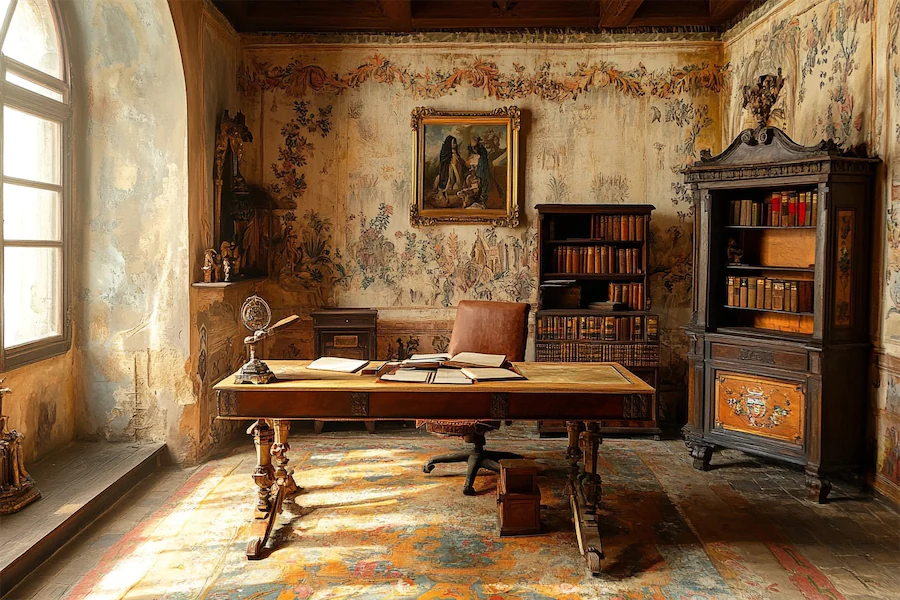An Italian Renaissance office room embodies the grandeur and elegance of 15th to 17th-century Italy, creating a workspace that reflects classical beauty and scholarly refinement.
Introduction to Italian Renaissance Office Rooms
The Italian Renaissance design style is characterized by symmetry, proportion, and the incorporation of classical elements such as columns, arches, and decorative motifs. In an office setting, this translates to a harmonious and inspiring environment that pays homage to the art and architecture of Renaissance Italy.
History and Origins of Italian Renaissance Office Rooms
The Renaissance, meaning “rebirth,” was a period of renewed interest in the art and philosophy of ancient Greece and Rome. This cultural movement began in Italy in the 14th century and profoundly influenced architecture and interior design. Interiors from this era featured grand spaces adorned with frescoes, intricate woodwork, and classical details, aiming to reflect the humanistic values and intellectual pursuits of the time.
Key Features of Italian Renaissance Office Rooms
- Classical Architectural Elements: Incorporation of columns, pilasters, arches, and coffered ceilings to evoke the grandeur of Renaissance architecture.
- Rich Materials: Use of luxurious materials such as marble, walnut, and fine textiles to convey opulence and sophistication.
- Ornate Furniture: Inclusion of elaborately carved desks, chairs, and bookcases inspired by Renaissance designs, often featuring motifs like acanthus leaves and scrolls.
- Decorative Arts: Display of artwork, sculptures, and tapestries that reflect Renaissance themes and craftsmanship.
- Symmetry and Proportion: Adherence to balanced layouts and harmonious proportions, reflecting the Renaissance emphasis on order and beauty.
Applications of Italian Renaissance Office Rooms
This design style can be applied to various office settings:
- Home Offices: Creating a refined and inspiring workspace that reflects a passion for classical art and history.
- Executive Suites: Designing offices that convey authority, sophistication, and a connection to cultural heritage.
- Libraries and Study Rooms: Establishing environments that encourage scholarly pursuits and intellectual reflection.
Considerations When Designing an Italian Renaissance Office Room
- Authenticity: Use quality materials and craftsmanship to accurately reflect Renaissance aesthetics.
- Space and Scale: Ensure that the room’s dimensions can accommodate the grandeur associated with Renaissance design without overwhelming the space.
- Integration with Modern Technology: Thoughtfully incorporate contemporary office equipment in a way that complements the classical design elements.
- Lighting: Utilize a combination of natural light and period-appropriate fixtures to enhance the ambiance and highlight architectural details.
Conclusion
An Italian Renaissance office room offers a timeless and elegant workspace that combines functionality with classical beauty. By thoughtfully integrating key elements of Renaissance design, one can create an environment that inspires productivity and reflects a deep appreciation for art and history.
